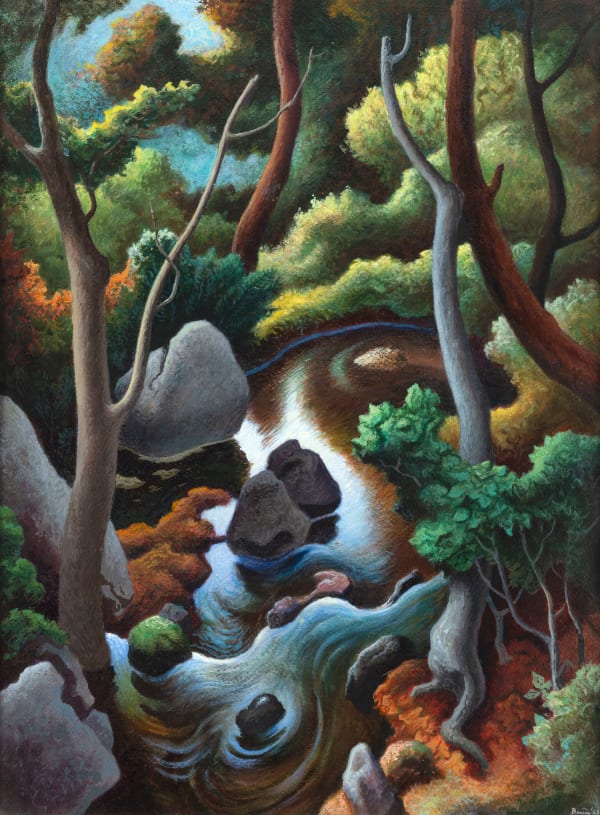Thomas Hart Benton 1889-1975
Born in Missouri into a politically influential family in 1889, Benton found inspiration among working class communities in rural America. A prolific painter, sculptor, printmaker and gifted storyteller, Benton is credited with leading the Regionalist movement in the United States early in his career. He has long been celebrated as the most innovative practitioner of mural painting depicting American life. This mastery is on display in America Today (1930–31; Metropolitan Museum of Art) and Arts of Life in America (1932; New Britain Museum of American Art).
Benton studied at prestigious institutions including the Art Institute of Chicago in 1907 and the Académie Julian in Paris, where he met fellow American painter, Synchromist Stanton Macdonald-Wright. Settling in New York in 1911, Benton’s work remained largely abstract until the early 1920s. On a 1924 trip home to visit his father, he was inspired to revisit his midwestern roots and began painting American rural subjects such as life in coal mines, steel mills and cotton fields. The influence of Spanish Old Master El Greco is evident in Benton’s naturalistic style, sculpted figures and fluid lines. While the rhythmic distortions of Benton’s compositions were informed by his European study, his work reflects a vibrant diversity that is distinctly American.
Benton was the first artist to be featured on the cover of Time magazine and his murals hung at an early site of the Whitney Museum of American Art. It was during this time that Benton formed a close alliance with his student - and frequent guest at his Martha’s Vineyard studio - Jackson Pollock.
-
 Thomas Hart BentonChilmark Landscape, 1925
Thomas Hart BentonChilmark Landscape, 1925 -
 Thomas Hart BentonEdge of the Field (Cotton Pickers), 1943-61
Thomas Hart BentonEdge of the Field (Cotton Pickers), 1943-61 -
 Thomas Hart BentonWyoming Landscape, 1967
Thomas Hart BentonWyoming Landscape, 1967 -
 Thomas Hart BentonPaint Mill Brook, Chilmark (Woodland Stream), 1969
Thomas Hart BentonPaint Mill Brook, Chilmark (Woodland Stream), 1969 -
 Thomas Hart BentonJon Boat, Buffalo River – Study (Making Camp), 1973
Thomas Hart BentonJon Boat, Buffalo River – Study (Making Camp), 1973 -
 Thomas Hart BentonHistory of New York – 1653: Colonial Era (Pilgrims and Indians) – Study, c. 1927
Thomas Hart BentonHistory of New York – 1653: Colonial Era (Pilgrims and Indians) – Study, c. 1927







